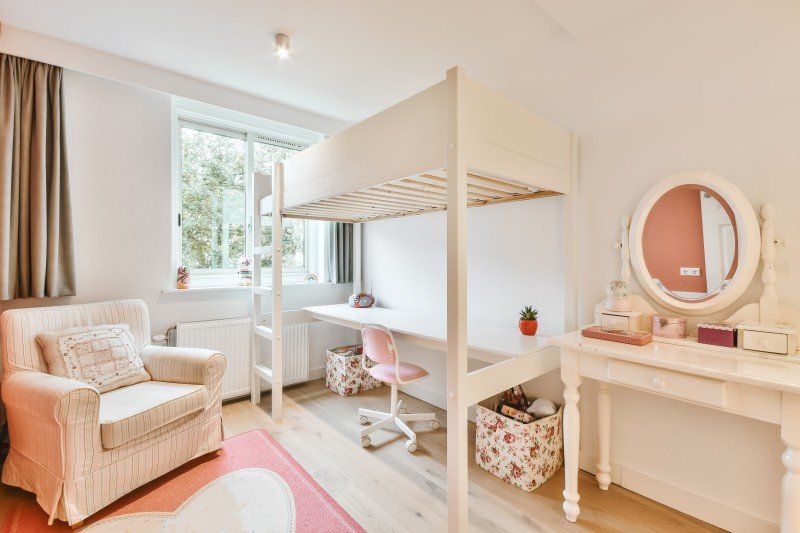A Comprehensive Guide to Children's Bunk Beds: Styles, Benefits, and Safety Considerations
Bunk beds have ended up being a popular option for households seeking to optimize space and provide an enjoyable sleeping environment for children. With their distinct style, they offer an innovative and practical solution for shared bed rooms, playrooms, or perhaps guest lodging. This article explores the different styles of children's bunk beds, their benefits, security considerations, and addresses some often asked questions.
The Allure of Bunk Beds
Children's bunk beds are more than simply space-saving structures; they are likewise a gateway to adventurous dreams and imaginative play. Below is an in-depth evaluation of their many advantages.
Advantages of Bunk Beds
- Space-Saving: Bunk beds effectively make use of vertical space, making them a perfect option for smaller sized rooms.
- Playful Design: Many bunk bed styles include slides, camping tents, and themed components, sparking imagination and excitement.
- Partner Sharing: Bunk beds are ideal for siblings sharing a space or accommodating sleepovers.
- Versatile Use: Some models can be separated into two private beds, offering versatility as children grow.
- Storage Options: Many bunk beds feature built-in drawer storage or shelves, even more improving their practicality.
Styles of Children's Bunk Beds
The range of bunk beds readily available today deals with different choices and requirements. Below is an overview of some popular designs.
| Style | Description | Best For |
|---|---|---|
| Requirement Bunk Bed | A traditional design including one bed stacked above another. | Brother or sisters sharing a space. |
| Loft Bed | Similar to a bunk bed without the bottom bunk, allows for a work area or play location below. | Minimal space for play/desk. |
| L-Shaped Bunk Bed | Two beds set up in an L-shape, often with extra areas for storage or play. | Special space designs. |
| Twin Over Full | A twin bed over a complete bed, accommodating various sleep requirements. | Growing kids and teens. |
| High Sleeper | Stands even greater than a loft bed, typically including a desk or play area below. | Older kids needing more play/desk space. |
| Camping Tent Bunk Bed | Bunk beds with a canopy or tent-like structure, producing a comfortable, fun space. | Active and imaginative children. |
Secret Features to Consider
When picking the ideal bunk bed for kids, the following functions are worth thinking about:
- Material: Bunk beds can be made from wood, metal, or a combination. Each has its unique visual and sturdiness.
- Weight Capacity: Always validate the weight limitation of the bunk bed to ensure it can accommodate your children safely.
- Safety Rails: Ensure the leading bunk has durable rails to avoid falls.
- Ladder Security: A well-designed ladder must use easy and safe access to the upper bunk.
- Ending up: Ensure any finishes are non-toxic and safe for kids.
Safety Considerations
Safety is paramount when it comes to kids's bunk beds. The following standards must be followed:
- Age Appropriateness: Generally, kids under six years of ages must not sleep in the upper bunk due to safety dangers.
- Tough Construction: Ensure the frame and products are solid and can support the weight without sagging.
- Routine Maintenance: Periodically look for loose screws, bolts, or other components that might require tightening.
- Clear Play Area: Keep the area around the bunk bed without toys and challenges to lessen tripping hazards.
Setting Rules for Safe Use
Developing standards for bunk bed use will help ensure safety:
- Limit Jumping and Climbing: Children must be advised against jumping from the top bunk and getting on the sides.
- Monitoring Sleepovers: Monitor young guests while they are utilizing the bunk bed for the very first time.
- Educate on Ladder Use: Teach how to use the ladder safely, emphasizing the value of facing the ladder when climbing up or down.
Regularly Asked Questions
1. What age is suitable for a kid to sleep in the leading bunk?
A lot of producers recommend that kids should be at least six years old to sleep in the upper bunk. This guideline is developed to alleviate the danger of falls.
2. Can bunk beds be personalized?
Yes, many makers offer adjustable choices, including colors, products, and extra features like drawers or desks.
3. Are bunk beds safe for weight?
Bunk beds have weight limitations, usually ranging from 200 to 400 pounds, depending upon the design and material. Always inspect the producer's requirements.
4. How do I preserve and clean a bunk bed?
Frequently look for loose parts, keep the bed tidy by cleaning down surface areas, and ensure the bed linen is fresh to promote a safe and sanitary sleep environment.
5. Can bunk beds be separated into private beds?
Many bunk beds come with a choice to separate them into two private beds, offering long-lasting versatility.
Kid's bunk beds are more than simple furnishings; they are a practical, flexible, and creative component of a child's space. With numerous styles available and various security factors to consider to remember, parents can select the perfect bed that fits their space, satisfies their children's needs, and instills a sense of experience. By comprehending www.bunkbedsstore.top , styles, and precaution connected with bunk beds, families can produce a wonderful and safe sleeping environment for their children. Whether for siblings sharing a space or space-saving services, bunk beds remain a cherished choice for numerous households.

